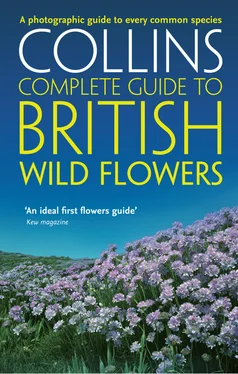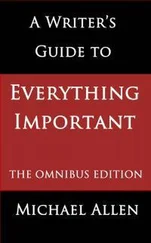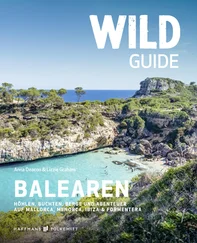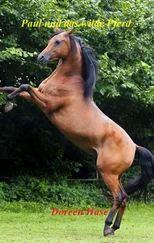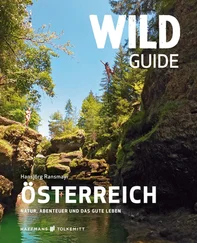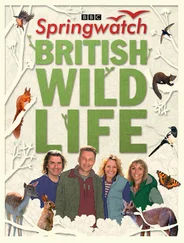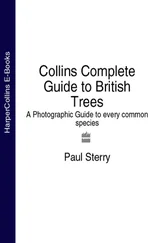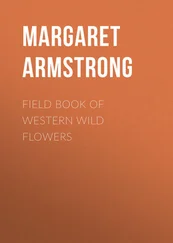
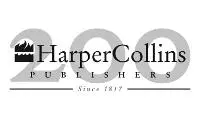
COPYRIGHT
Collins
An imprint of HarperCollins Publishers Ltd.
1 London Bridge Street
London SE1 9GF
www.harpercollins.co.uk
Collins is a registered trademark of HarperCollinsPublishers Ltd.
First published in 2006
Text © 2006 Paul Sterry
Photographs © Individual photographers indicated in the picture credits
Colour reproduction by Nature Photographers Ltd.
Paul Sterry asserts his moral right to be identified as the author of this work
A catalogue record for this book is available from the British Library
All rights reserved under International and Pan-American Copyright Conventions. By payment of the required fees, you have been granted the nonexclusive, nontransferable right to access and read the text of this ebook on-screen. No part of this text may be reproduced, transmitted, downloaded, decompiled, reverse-engineered, or stored in or introduced into any information storage and retrieval system, in any form or by any means, whether electronic or mechanical, now known or hereafter invented, without the express written permission of HarperCollins ebooks
HarperCollins Publishers has made every reasonable effort to ensure that any picture content and written content in this ebook has been included or removed in accordance with the contractual and technological constraints in operation at the time of publication.
Source ISBN: 9780007236848
Ebook Edition © MARCH 2015 ISBN: 9780008144586
Version: 2016-12-05
Cover
Title Page
Copyright
Introduction
How to Use this Book
Basic Botany
Glossary
Flowers
Wild Flower Identification
Fruits and Seeds
Leaves
Habitats
Conservation
Species Descriptions
Juniper to Nettle Families
Nettle, Birthwort and Knotweed Families
Knotweed Family Polygonaceae
Blinks to Goosefoot Families
Goosefoot Family Chenopodiaceae
Goosefoot and Pink Families
Pink Family Caryophyllaceae
Buttercup Family Ranunculaceae
Fumitory and Poppy Families
Poppy, Barberry and Cabbage Families
Cabbage Family Brassicaceae
Cabbage and Mignonette Families
Sundew, Pitcherplant and Stonecrop Families
Stonecrop and Saxifrage Families
Saxifrage Family Saxifrageaceae
Gooseberry and Rose Families
Rose Family Rosaceae
Pea Family Fabaceae
Pea and Wood-sorrel Families
Crane’s-bill Family Geraniaceae
Crane’s-bill and Flax Families
Spurge Family Euphorbiaceae
Spurge, Milkwort and Balsam Families
Holly, Spindle, Buckthorn, Box and Mallow Families
Mallow to St John’s-wort Families
St John’s-wort and Rock-rose Families
Violet Family Violaceae
Violet to Willowherb Families
Waterwort and Willowherb Families
Willowherb and Dogwood Families
Ivy and Carrot Families
Carrot Family Apiaceae
Primrose Family Primulaceae
Heather Family Ericaceae
Heather and Crowberry Families
Wintergreen, Bird’s-nest and Thrift Families
Ash and Gentian Families
Gentian, Bogbean, Periwinkle and Bedstraw Families
Bedstraw Family Rubiaceae
Bedstraw, Jacob’s-ladder and Dodder Families
Bindweed and Borage Families
Borage Family Boraginaceae
Vervain and Dead-nettle Families
Dead-nettle Family Lamiaceae
Dead-nettle and Butterfly-bush Families
Nightshade and Figwort Families
Figwort Family Scrophulariaceae
Figwort and Broomrape Families
Broomrape, Moschatel and Valerian Families
Valerian and Butterwort Families
Plantain and Arrowgrass Families
Honeysuckle and Teasel Families
Teasel and Bellflower Families
Bellflower Family Campanulaceae
Daisy Family Asteraceae
Iris, Black Bryony and Lords-and-ladies Families
Orchid Family Orchidaceae
Water Plants
Pondweeds Potamogetonaceae
Bur-reed, Bulrush and Rush Families
Rush and Sedge Families
Sedge Family Cyperaceae
Sedge and Grass Families
Grass Family Poaceae
The West Country
The Lizard
The Isles of Scilly
Channel Islands
The New Forest and Isle of Wight
South-East England’S Estuaries and Coasts
The South and North Downs
East Anglia
The Chilterns and Cotswolds
English and Welsh Uplands
Scottish Highlands and Western Isles
Shetland and Orkney Isles
Ireland
Further Reading and Useful Organisations
Index
About the Publisher
PEOPLE LIVING IN BRITAIN and Ireland seldom have to travel far to find a wealth of wild flowers and, although the region’sv plantlife faces significant conservation issues, residents should feel privileged to live in such a flower-rich part of the world. Underpinning our floral diversity is a rich array of habitats, the product of our region’s topography, geology and history of land use. Good fortune, in the form of the Gulf Stream, dictates a mild and comparatively equable climate for much of the time, and this, too, contributes to botanical diversity. Complete British Wild Flowers has arisen from my personal love for the flora of Britain and Ireland, not to mention half a lifetime devoted to photographing our wild flowers.
THE REGION COVERED BY THIS BOOK
The region covered by this book comprises the whole of mainland England, Wales, Scotland and Ireland, as well as offshore islands including the Shetlands, Orkneys, Hebrides, Isle of Man and the Isles of Scilly. In addition, I have included the Channel Islands because their proximity to, and ecological affinities with, northern France allow them to make a valuable contribution to our flora.
The coverage of the book is restricted mainly to what most people understand to be wild flowers – not a strict botanical term, but taken to mean flowering plants of relatively modest stature, species that in most cases do not exceed 2m in height. For the sake of completeness I have also included a number of woody flowering shrubs, but I have excluded obvious tree species. Terrestrial habitats harbour the lion’s share of our flowering plants and this is reflected in the coverage of this book. But I have also included species that are strictly aquatic, both those that occur in freshwater habitats and the limited range of flowering plants that grow in coastal marine environments.
Complete British Wild Flowers is aimed primarily at the botanical novice and those with a moderate degree of botanical experience. Consequently, for the main section of the book, I have selected species that the naturalist stands a reasonable chance of encountering, although a few scarce but spectacular and distinctive species have also been included here for good measure. Some botanical groups are minefields for the beginner: for example, hundreds of so-called ‘microspecies’ of brambles are recognised by experts and similar complexity is found among dandelions, hawkweeds and eyebrights to name three more. In a book of this size, accurate identification of these subdivisions is impossible to achieve. So rather than baffle the reader, I have chosen to ‘lump’ the subdivisions together within these complex groups and treat them as species aggregates.
Читать дальше
